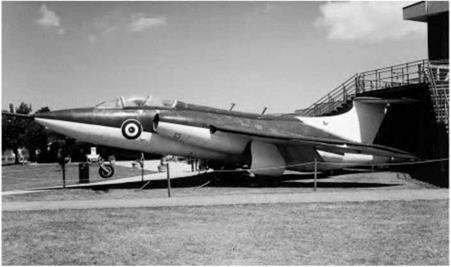Area rule
We should by now realise that if the drag is to be kept to a minimum at transonic speeds, bodies must be slim and smooth, and have ‘clean lines’. What is the significance of clean lines? Well, it is often said to be in the eye of the beholder, what looks right is right – yes, but it depends on who looks at it; and a little calculation, a little rule, formula, or whatever it may be will often aid our eyes in designing the best shapes for definite purposes. The area rule (Fig. 11C) is simply one of these rules, and put in its simplest form it means that the area of cross-section should increase gradually to a maximum, then decrease gradually; in this sense a streamline shape obeys the area rule, though for transonic speeds, and indeed for high subsonic speeds, the maximum cross-sectional area should be about half-way, rather than one-third of the way back, this giving a more gradual increase of cross-sectional area with an equally gradual decrease. The body in Fig. 11.19 (overleaf) obeys the area rule – but it hasn’t got any wings. If we add a projection to a body, such as the wings to a fuselage, we shall get a sudden jump in the cross-sectional area – and that means that the area rule is not being obeyed. What then can we do? – the answer is that we must decrease the cross-sectional area of the fuselage as we add the cross-sectional area of the wings in such a way that the total cross-sectional area of the aeroplane increases gradually. Similarly behind the point of maximum cross-sectional area it is the total cross-sectional area that must be gradually decreased.
|
|
Fig 11C Transonic area rule
The transonic British Aerospace Buccaneer which finally saw action in the Gulf War shortly before retirement. The bulge in the rear fuselage is for purposes of area rule.
|
Rear of fuselage is cut off for
|
Fig 11.19 Area rule – plan view of fuselage without wings or tail
It will be realised that the application of this rule gives a waist to the fuselage where wings or other parts such as the tail plane are attached (Figs 11.19 and 11.20). It will be realised, too, that sweepback – in addition to its other advantages – is to some extent an area rule in itself so far as the wings are concerned, the cross-sectional area being added gradually, and so the waisting of the fuselage will be less marked with swept-back wings than with straight wings.












